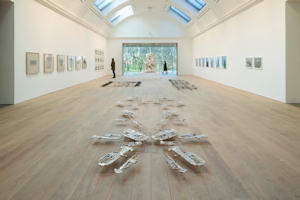The Whitworth wins share of £1.4 million culture and health grant
18 Jun 2015
Art gallery awarded one of just eight project grants from the Arts Council

The Whitworth art gallery has been awarded one of just eight project grants from the Arts Council’s £1.4 million Research Grants Programme 2015-18 to evaluate culture and health programmes in Manchester and Tyne and Wear.
‘Not so grim up North’ brings together three organisations, all recognised by the Royal Society for Public Health for their leading practice and research in the field of health, culture and wellbeing; the Whitworth in Manchester (on behalf of Manchester Museums and Galleries Partnership), Tyne and Wear Archives and Museums (TWAM) and researchers at University College London (UCL).
Richard Russell, Director of Policy and Research at Arts Council England says: “We were delighted by the high-level of interest in the fund from the sector, but it meant we had to make some very difficult decisions. We are pleased with the wide range of projects we are able to fund. Now more than ever, it is important we improve knowledge and understanding about the value of arts and museums. We are looking forward to seeing robust research studies and being able to share findings with government and commissioners at a national and local level.”
The project, awarded £192,101, seeks to fill gaps in the evidence base for understanding the value of museum encounters on health and wellbeing and will identify the critical success factors for museums in health programming and evaluation. It will also explore how findings can feed into broader regional and national agendas.
Esme Ward, Head of Learning and Engagement at the Whitworth says: “Several years ago at the Whitworth we created the first ever dedicated museum-based arts and health post. Since then, we have developed wide-ranging health and wellbeing partnerships and programmes. We are delighted to have received this funding to develop this work further, through collaboration with UCL researchers and Tyne and Wear Archives and Museums, to explore the wider impact and significance of this work.”
